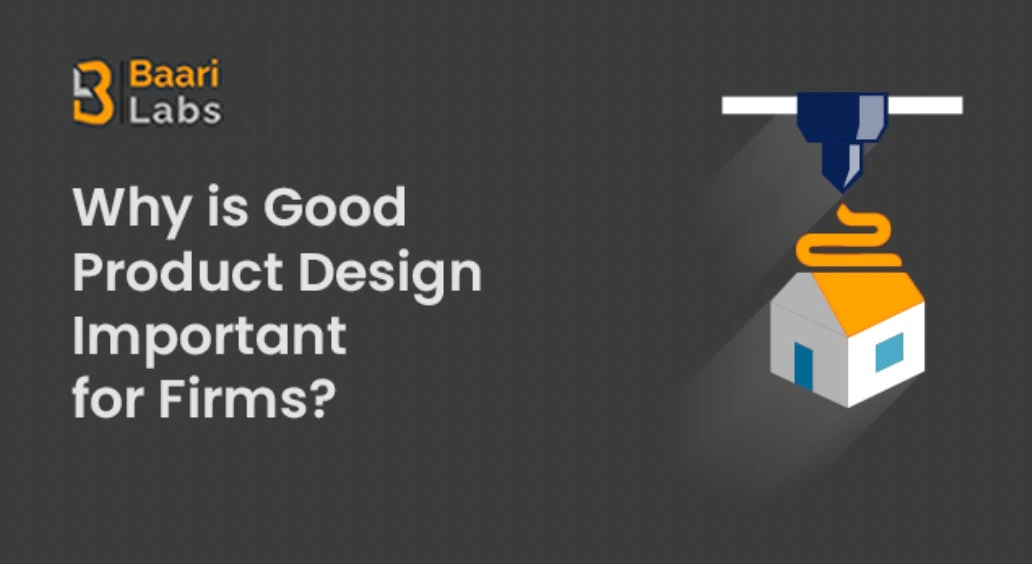Why is Good Product Design Important for Firms?

“Design-driven companies have outperformed the S&P Index by 228% over 10 years.” ~ Paulapons
On the other hand,
"60% of consumers have stopped doing business with a company due to poor customer service or bad product design.” ~ Accenture.
The above data highlights the importance of product design in building a strong brand and a good business.
Let's dive deep into how your firm can benefit from a good product design.
Why is Good Product Design Important for Companies?
1. Strong Brand Positioning
Your brand can have many differentiations that it can build upon through product design such as features, technology, superior quality, or customer experience.
It enables the firm to:
- Build a strong positioning
- Consistently communicate about your company and its purpose to form associations
- Gain high brand recall and recognition.
Let's think differently and look at the classic example of Apple.
Apple is not known solely for being a pioneer in tech but for its minimalist design.
They focus on building the entire experience of using an Apple fun, easy, and enriching for users through its product design.
It became their prime differentiation, and they stand by it to date, so much so that they have prioritized design over sales and engineering.
2. Competitive Advantage
Firms can have opportunities to create differentiation on many grounds, thanks to product design:
- Product (High-performance product)
- Price (Whether they will be in the Premium or Affordable range)
- Customer's Experience with the product and the brand.
It empowers a firm to build a positive brand image and reputation, stand out from competitors, and win market share.
Here's a product design that smoothly accelerated and stood out from its competitors - Tesla Model S.
It's an electric vehicle that’s ahead due to its high performance (travels long distances with a single charge), price (on par with high-end luxury cars) and experience (has features like remote control from mobile and autonomous driving).
3. Enhances Customer Experience and Builds Loyalty
A good product design considers the users' needs first, fulfils them, and adapts to their changing necessities.
It enhances the consumers' experience through its ease of design and high performance and assists them in utilising it to the fullest.
When consumers can easily use a product to its potential, ask for support at any point, and avail the desired benefits, they develop an affinity for the brand.
The buyers become loyal to the brand and willingly contribute to its growth (sales) and goodwill (reputation).
AirBnB has won its users' loyalty through its design that tailors the website to a level where it gives hyper-focused results to visitors and helps them easily navigate, search, read reviews, and decide.
It innovates to enhance the users' time spent with them through upgrades in product design.
It has helped AirBnB stay ahead of the competition while delighting its users with value.
4.Cost-savings
Your firm can achieve cost savings through a good product design.
Here’s How.
- Material Costs: It leads to reduced waste and lower raw materials costs as the product design optimizes all the materials.
- Maintenance Costs: It will have high performance, durability, and adaptability and hence, will bring down the cost of repairing or replacing parts.
- Production Costs: It can simplify and streamline the assembly process to boost efficiency and lessen manual efforts.
- Inventory Costs: A good product design will be minimalist (with fewer parts and only important features). Hence, it will reduce storage space for the design and raw materials.
- Customer Service Costs: It will enable consumers to benefit from its ease of design and use. Buyers can navigate the product by themselves, and firms can save the resources spent catering to dissatisfied customers.
We all know of a product design we use regularly but have never paid close attention to - Paper clips.
Paper clips are a highly functional design that saves the paper from tearing apart or the workers from getting pierced (service costs).
They save production and inventory costs as they are easy to design, make, and store. They are recyclable (material costs) and don't need any maintenance.
5.Reduced Risk
A good product design can enable your firm to minimize these risks:
- Reputational Risks: As the prototype goes through the market testing phase, it meets the consumers' needs, market expectations, and demands. It reduces the risk of building a failed product, receiving negative feedback from the market, and not being able to adapt to market changes and competitors launching the product.
-
Financial Risks: The development and testing phase highlights the scope of improvement and innovation early on.
It leads to savings in the resources to improve a product post-launch or make changes in the post-design phase (during production and launch). - Safety Risks: It reduces the risk of the product causing any harm or injury to users and not complying with market benchmarks.
Netflix believes in the philosophy of "Release Early, Release Often."
They innovate regularly and upgrade their product design with the help of A/B testing and feedback.
They have enhanced its users' experience by personalizing content and making its platform accessible.
It has enabled them to stay ahead and relevant through consistent experimentation while reducing the risk of negative feedback and lack of fit.
In short, a good product design enables firms to build strong brand positioning, gain a competitive edge, build loyalty through experience, save costs, and reduce risks.
Aren't these reasons compelling enough to convince you to take a design-first approach to your problems?


.webp)

.webp)